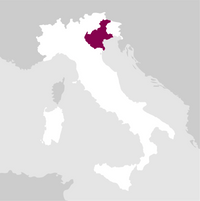Awards
Details

Perfume

Color

Taste
Serve at:
06 - 08 °C.
Longevity:
03 - 05 years

Pairings
- Start up year: 1933
- Oenologist: Franco e Fabrizio Adami
- Bottles produced: 850.000
- Hectares: 50
Today, the fourth generation, in the persons of Fabrizio, Claudio and Cristina, are actively contributing, and brand exploration has now spread to four continents. The long arc of these years has seen an alternating succession of viticultural achievements and international accolades that have brought together winegrowing experts, wine lovers, and sector professionals, an opportunity-rich adventure in which excellence has always met challenges yet always emerged triumphant. The result has been a patrimony of a family, of a growing area, and of a community, a heritage that only 100 years of history can fashion. Read more


| Name | Adami Valdobbiadene Prosecco Superiore dei Casel Extra Dry |
|---|---|
| Type | White charmat method sparkling wine extra dry |
| Denomination | Conegliano Valdobbiadene Prosecco DOCG |
| Size | 0,75 l |
| Alcohol content | 11.0% by volume |
| Grape varieties | 100% Glera |
| Country | Italy |
| Region | Veneto |
| Vendor | Adami |
| Climate | Moderate temperatures with cold Winters and warm, dry Summers. Average rainfall: 1,250 millimetres with heaviest fall in June and November, lightest in January and August. Solar radiation, April-October: 92,745 cal/cm2. |
| Soil composition | Mixed soils, typical of morainic (glacial) origin of many of the area’s hills. Clayey, often calcareous, low-nutrient and well-drained; fairly shallow, in particular at higher elevations. |
| Plants per hectare | 2,500-3,500 |
| Harvest | September 20 - October 10 |
| Fermentation temperature | 17 9°C |
| Wine making | Light pressing with bladder presses, settling of must, fermentation at controlled temperatures (17 9°C) with cultured yeasts. Contact with fine lees in stainless steel for three months. Second fermentation: temperature 15 7°C. Cold tartrate stabilisation (-4°C). Tight filtration before bottling to remove spent yeast from the sparkling wine (cycle length: Approx. 40 days). |
| Aging | Contact with fine lees in stainless steel for three months. |
| Total acidity | 6.0 gr/L |
| PH | 3.2 |
| Allergens | Contains sulphites |





